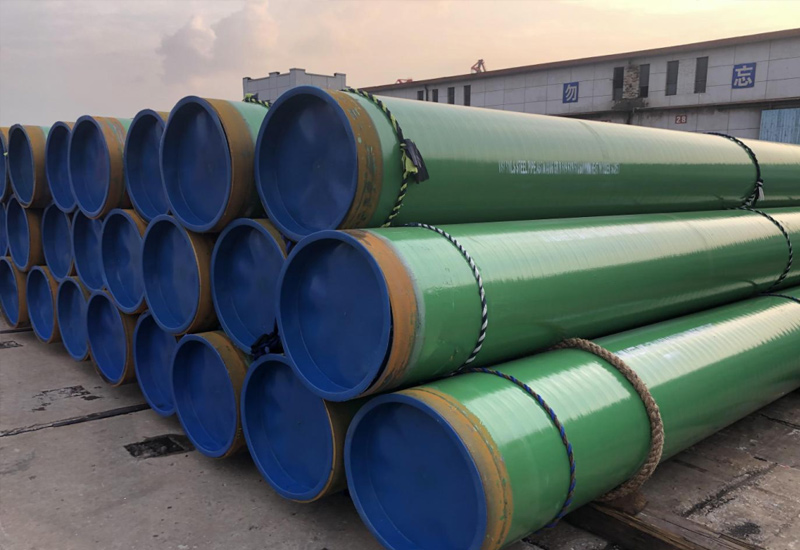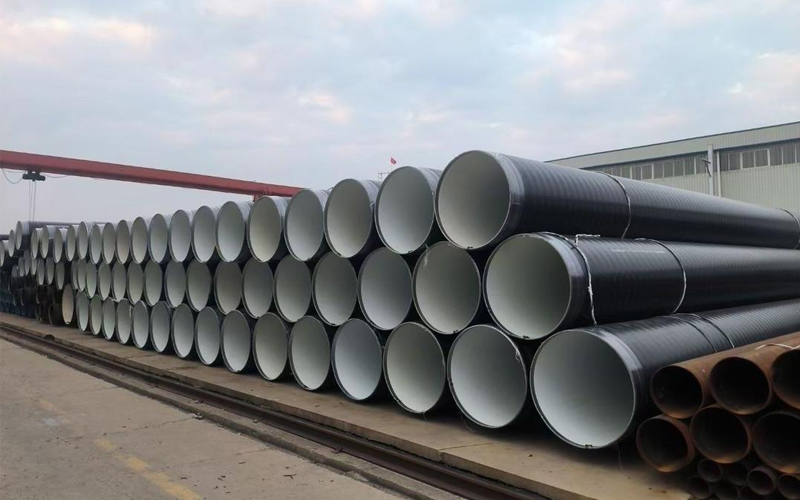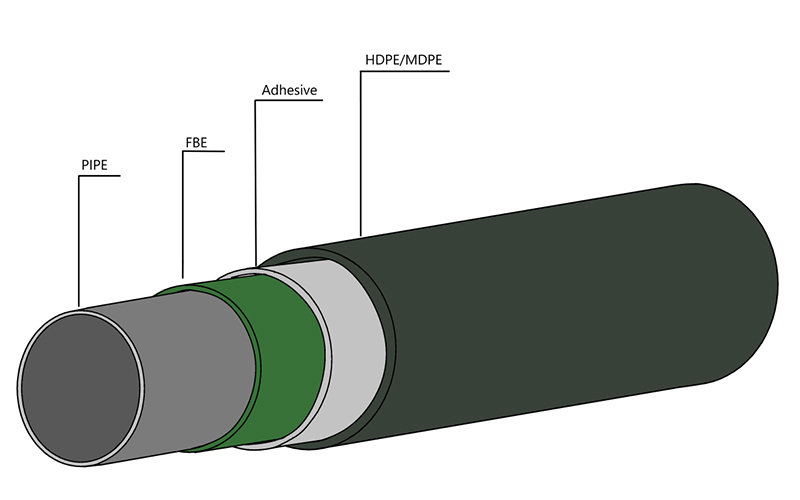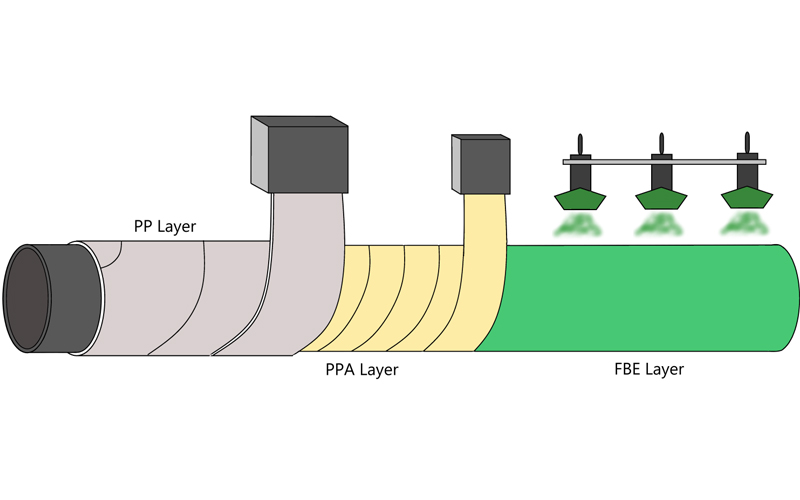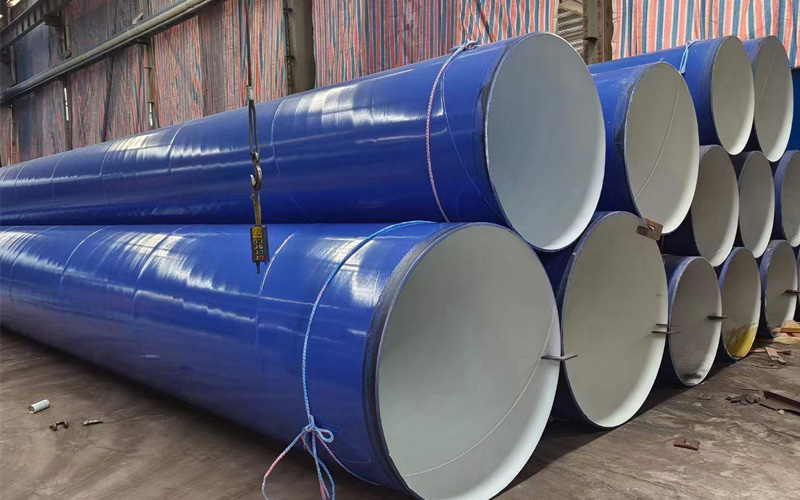Bevel vs. Plain vs. Threaded:Choosing the Right Pipe End
For steel pipe systems, the preparation of pipe end is very important. For project engineers, site managers, welding technicians and purchasing teams, knowing the differences between bevel, flat end and threaded ends can avoid costly delay, ensures structural integrity and matches the correct steel pipe to your project. This guide breaks down key details to make informed decisions.
More Than Just an Endpoint: Why Pipe End Preparation Matters
The end of the pipeline may look small, but it determines the connection mode, strength and installation efficiency of the steel pipe. A wrong end of the high-pressure tubing could cause leakage or danger; Over engineering a low-pressure system wastes time and money. Proper preparation eliminates risks: it helps to integrate steel pipe with fittings/valves, reduces labor (for teams without welding skills) and ensures long-term performance.
The Simplest Form: Plain End (PE)
The flat ends (PE) is the most basic: a smooth cut on steel pipe without grooves, threads or angles. Their simplicity is suitable for low-stress applications.
When to Use Plain Ends
PE is the ideal choice for low-pressure environments where a simple, effective seal is required without complex preparation.
Low pressure fluid transmission: municipal non-main water pipes, HVAC condensate or low viscosity chemical systems. PE steel pipe avoid extra expenses for special purposes.
· Socket welding (SW): PE steel pipe (≤ 2 inches) slides into concave pipe fitting; The joints are welded from the outside to form a leak-proof seal.
· Slip-on flanges: Slide over PE ends, secured with bolts/gaskets—easy to align for compressed air or light industrial lines.
The Standard for Welding: Bevel End (BE)
Bevel (BE) is the gold standard of high strength steel pipe connections. When two BE tubes are aligned, a “V-shaped groove” will be formed by cutting at an oblique angle of 30-35 degrees, which makes them essential parts for critical applications.
The Critical Role of the “V-Groove” in Butt Welding
Butt welding depends on the V-groove: it contains the filler material and allows the welders to achieve “full penetration” (weld through the whole steel pipe wall). This makes the weld as strong as the pipeline itself, eliminating weaknesses. A poor inclined plane (shallow/uneven) will lead to partial penetration, which will lead to cracks.
Common Standards and Applications
BE complies with ASME B 16.25 (angle, root surface and tolerance are specified). Allland steel pipe also abides by the API 5 l (Oil/Gas) interchangeable high-quality steel pipe standard. The applications of BE include:
· Oil/natural gas pipelines (onshore/offshore, extreme pressure/temperature).
· High pressure water (main water pipe, water and electricity lines).
· Structural Engineering (Building Frames, Bridges).
· Chemical treatment (high pressure, corrosive liquids).
For Mechanical Connections: Threaded End (TE)
Threaded ends (TE) supports the mechanical connection and does not need welding. Spiral grooves (external thread/internal thread) on steel tube enables it to be screwed into the pipe fittings. TE is suitable for small diameter, medium and low pressure systems.
Where Threaded Connections Shine
The advantages of TE lie in its speed and simplicity (non-high-pressure use).
· Small steel pipe (≤ 2 inches): Larger pipes require threads that are difficult to manage.
· Low-to-medium pressure: Fire sprinklers, residential plumbing, small compressed air lines.
· No welding area (fire danger, poor ventilation): install with a wrench and sealant (PTFE/pipeline coating).
· Temporary/modular systems: easy to dismantle and maintain.
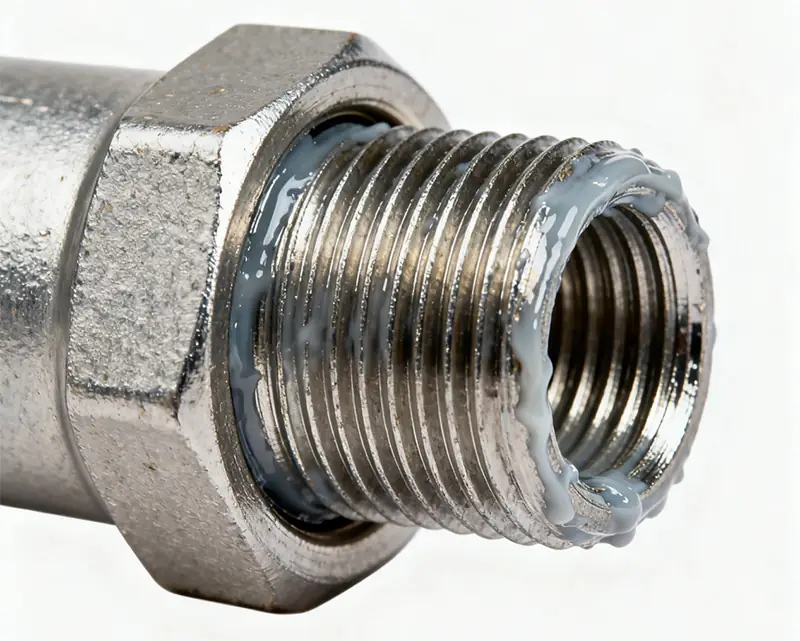
Quick Comparison: Choosing the Right End for Your Project
In order to simplify the selection, Allland steel pipe created this table to match your project to the correct steel pipe end:
| Feature | Plain End (PE) | Bevel End (BE) | Threaded End (TE) |
| Connection Method | Socket Welding / Slip-on Flanges | Butt Welding | Screwed Fittings(with sealant) |
| Typical Pressure Rating | Low (up to 150 PSI) | High (150+ PSI, up to 10,000+ PSI for specialized steel pipe) | Low to Medium(up to 300 PSI) |
| On-site Preparation | Minimal(clean end, align fitting) | Needs skilled welders; minor bevel touch-ups | Apply sealant; tighten with wrench (no special skills) |
| Best For… | Low-pressure, small-diameter steel pipe; non-critical systems | High-integrity, critical pipelines(oil/gas, water mains); structural use | Non-weld zones, small-diameter steel pipe; temporary systems |
| Key Specifications | 90° perpendicular cut | 30° – 37.5° angle per ASME B16.25 | NPT / BSP threads per API 5L |
Conclusion: Making the Right Decision, Quickly
Choosing the correct pipe end doesn’t have to be complicated. Use this simple framework for your next project:
· For high-pressure, critical systems (oil/gas, structural welding), the full penetration weld of a Bevel End (BE) is the mandatory choice for safety and integrity.
· For low-pressure, small-diameter lines (≤2 inches) where welding is an option, the Plain End (PE) offers the most cost-effective and simple solution for socket welds or slip-on flanges.
For non-weld zones or temporary systems requiring easy assembly, the Threaded End (TE) provides unmatched convenience for mechanical connections.
Share:
Get Your Custom Steel Pipe Quote Today!
Provide us with your project details (like application, specifications, quantity). Our experienced team will respond with a tailored solution and competitive quote within 24 business hours.
Related Articles
ASTM A53 vs. API 5L: A Guide to Selection and Application
Introduction:Technology differences determine success or failure, and selection needs to be “precise”
Steel Density Analysis: Core Differences between Mild and Medium Carbon Steels and Industrial Applications
3LPE coated steel pipe: a solid barrier in the field of industrial corrosion protection
3LPP coated pipe: anti-corrosion guard in high temperature and high pressure environment
FBE steel pipe: the technological armor of the steel defense line
HOT TAGS
latest posts
- How LSAW/SSAW Steel Pipes Ensure Safe & Durable Drinking Water Pipelines
- LSAW steel pipe vs ERW steel pipe: Unveiling Core Process Differences in Steel Pipe Welding from Arc to Current
- The Essential Guide to High Pressure Pipe Applications
- API 5L Grades Explained: X52, X65 & X70 Meaning?
- A Guide to Offshore Steel Pipe & Tubes for Subsea Projects




